What's New
Displaying results 541 - 550 of 4913
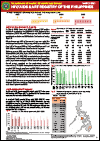
Resource | Fact Sheets,
In March 2021, there were 1,041 confirmed HIV-positive individuals reported to the HIV/AIDS & ART Registry of the Philippines (HARP). Fifteen percent (156) had clinical manifestations of advanced HIV infectiona at the time of testing.
Ninety-five percent (991) of the reported cases were male. The median age was 28 years old (age range: 6-65 years old). More than half of the cases (52% or 538) were 25-34 years old and 30% (316) were 15-24 years old at the time of diagnosis.
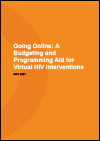
Resource | Publications,
Going Online is a vision and evolving framework for how HIV programs can use online and mobile platforms to accelerate impact toward meeting their HIV education, prevention, testing and treatment objectives. The LINKAGES project developed this vision to help populations facing the greatest HIV risks make connections to life-affirming and lifesaving services in an increasingly connected world. The vision will also help other stakeholders in the HIV response, including governments and community organizations seeking to modernize and diversify approaches, to reach and engage people in HIV services in ways that meet their needs and preferences.
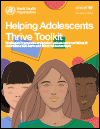
Resource | Tools,
This publication, produced by the World Health Organization and UNICEF, has been developed to support the implementation of the WHO Guidelines on mental health promotive and preventive interventions for adolescents, released in 2020. The Toolkit includes a core set of evidence-informed strategies to promote and protect adolescent mental health. These strategies are: the implementation and enforcement of laws and policies; the creation of safe environments; the provision of support to parents and other caregivers; and the implementation of programmes focused on helping adolescents develop social skills and emotional intelligence. Tools to guide implementation and examples of programmes already introduced around the world are included.

Resource | Publications,
The long-term impact of disruptions in access to essential health services during lockdowns, including harm reduction, sexual and reproductive healthcare, and HIV prevention, testing, and treatment programs, is still unknown. Governments in many regions are using COVID-19 as a pretext to introduce even more repressive policies and criminal measures towards sex workers, people who use drugs, LGBTQ people, migrants, and other vulnerable groups who are also bearing the brunt of COVID-19 restrictions on trade, movement, and health services access.
Other key and evolving needs during the pandemic that, if left unaddressed, will continue to have a devastating impact on the health, well-being, and human rights of people at risk of or living with HIV include: increased mental health issues (anxiety, depression, trauma), gender-based violence (GBV) and violence at the hands of law enforcement and security structures, as well as lack of access to technology for information, care and services which have increasingly shifted on-line. Throughout this period, communities and CBOs have demonstrated incredible resilience, flexibility, and creativity in meeting their own needs—as they always have—and examples are shared in this report.

Resource | Publications,
On 11 March 2020, the World Health Organization declared COVID-19 a pandemic. Since then, the virus has claimed millions of lives and has transformed nearly every aspect of our individual and collective reality. As with all areas of life, drug consumption, related harms and drug markets have been impacted, as have the services established to respond to drug-related problems. During the first weeks of the pandemic, the EMCDDA instigated two rapid assessment studies to identify the initial impact and implications of COVID-19. These studies identified signs of an overall decline in some forms of drug use during the first 3 months of the pandemic, largely as a result of national confinement measures. In addition, many drug services were forced to close or restrict their access, new measures for hygiene and social distancing were implemented, and there was a shift towards greater use of telemedicine.
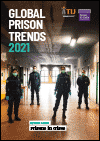
Resource | Publications,
Health crises and other emergencies are not unprecedented in prisons. This year’s Special Focus examines prisons in crises, and how authorities respond to health crises, natural hazards and extreme weather, or in fragile and conflict-affected settings. We look at how prisons and the people within them are affected, as well as the involvement of prison populations in times of such crises and consider what measures authorities can put in place for better preparedness and response.

Resource | Publications,
COVID-19 is the 21st century’s Chernobyl moment — not because a disease outbreak is like a nuclear accident, but because it has shown so clearly the gravity of the threat to our health and well-being. It has caused a crisis so deep and wide that presidents, prime ministers and heads of international and regional bodies must now urgently accept their responsibility to transform the way in which the world prepares for and responds to global health threats. If not now, then when?
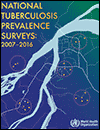
Resource | Publications,
WHO’s Global Tuberculosis (TB) Programme has published a book that provides a global synthesis of results and lessons learned from national TB prevalence surveys implemented 2007-2016. This was a collaborative effort of 24 countries and their technical partners with contributions from more than 450 people.

Resource | Publications,
The State of the World’s Midwifery (SoWMy) 2021 builds on previous reports in the SoWMy series and represents an unprecedented effort to document the whole world’s Sexual, Reproductive, Maternal, Newborn and Adolescent Health (SRMNAH) workforce, with a particular focus on midwives. It calls for urgent investment in midwives to enable them to fulfil their potential to contribute towards UHC and the SDG agenda.
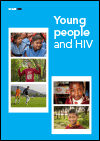
Resource | Publications,
Two out of every seven new HIV infections globally in 2019 were among young people (15–24 years). Additional efforts need to be made to address the structural factors that increase the vulnerability of adolescent girls, young women and young key populations and their risk of acquiring HIV, such as gender inequalities, gender-based violence, poverty, stigma and discrimination, and insufficient implementation of comprehensive sexuality education programmes.





